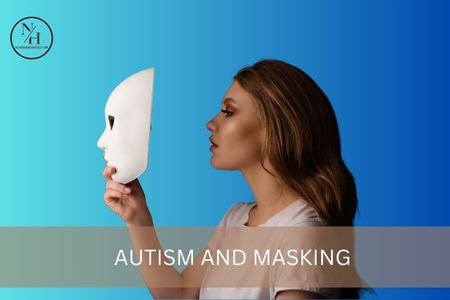Have you ever experienced people commenting on your autistic child (or self) something along the lines of “But he/she doesn’t look autistic!”? One reason for this comment may be because the neurodivergent condition known as autism is actually autism spectrum disorder. This means that the symptoms can vary depending on each individual.
But a second reason why some autistic people don’t appear autistic is that they’ve become used to “masking.”
What is masking?
Masking is the term used to describe the way that some autistic individuals adjust in order to look more “normal.” In other words, the person tries his best to look and act just like everyone else so as not to appear too different.
Now, adjusting to our social circles may feel normal. Neurotypical persons may try to do this too, to some extent, such as knowing when to act formally or knowing when joking is appropriate. The problem is that for the autistic individual, masking is actually the effort to act in ways that are natural for non-autistic people, which are not natural for the autistic person.
This results in added tension levels that cause him to feel more exhausted at the end of the day. In the long run, it can even cause autistic burnout and a myriad of other mental health issues.
What is an example of masking?
Other terms to help you understand the concept of masking is “camouflaging.” The autistic individual “camouflages” his autistic traits in order to blend in with the crowd. Another term would be compensating, or passing.
Masking usually means the autistic person being hyper vigilant and constantly adapting to the expectations and preferences of the people around them. This includes expectations that are verbally expressed, as well as those that are unspoken. Then, he or she adjusts or tries to control his or her behavior according to these perceived preferences, regardless of his or her own needs and preferences.
But what does masking look like? Masking can include:
- Mirroring others’ facial expressions even when they don’t feel natural;
- Hiding or suppressing stimming in public
- Forcing eye contact even if it feels uncomfortable
- Controlling one’s tone of voice or speech patterns to reflect what’s more commonly seen
- Controlling visible reactions to times when sensory input causes annoyance—such as trying not to complain when loud sounds come up in public places
- Practicing what to say to someone or planning what to do in an upcoming social gathering
Effects of masking
Because masking is essentially choosing to behave in a way that other people’s needs and preferences dictate, it means that the autistic person’s needs and preferences, including coping mechanisms, end up being suppressed. This can lead to:
- Meltdowns and/or shutdowns that seem to come on suddenly but were actually held on to and which the autistic individual lets go of as soon as he reaches an environment he feels safe in. (This is one possible reason why autistic children melt down the moment they get home from school.)
- Physical and mental exhaustion that may eventually cause autistic burnout
- Mental health problems, which may compound suicidal thoughts and self-harm
- Feeling isolated and disconnected from others
- Becoming more a potential target for abusers, since masking trains the person not to rock the boat
- Low self-esteem
- Loss of a sense of self
What age does autistic masking start?
Masking can start at any age. Although it’s not clear just how common it is, possibly it may be more common for those who are diagnosed later, which led to their being overlooked because they blend in so well. The underlying exhaustion may not be something easily observed.
Masking and Understanding Autism
As of the moment, we don’t have any formal clinical assessment tools to identify masking, although some assessment methods and questionnaires are currently being used for research purposes.
Diagnosing professionals need to know that an autistic person may be masking, and this behavior may continue even during an assessment for autism, simply because it’s become a way of life and, in essence, a survival mechanism but that which can be more detrimental in the long run.

